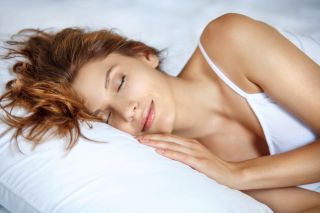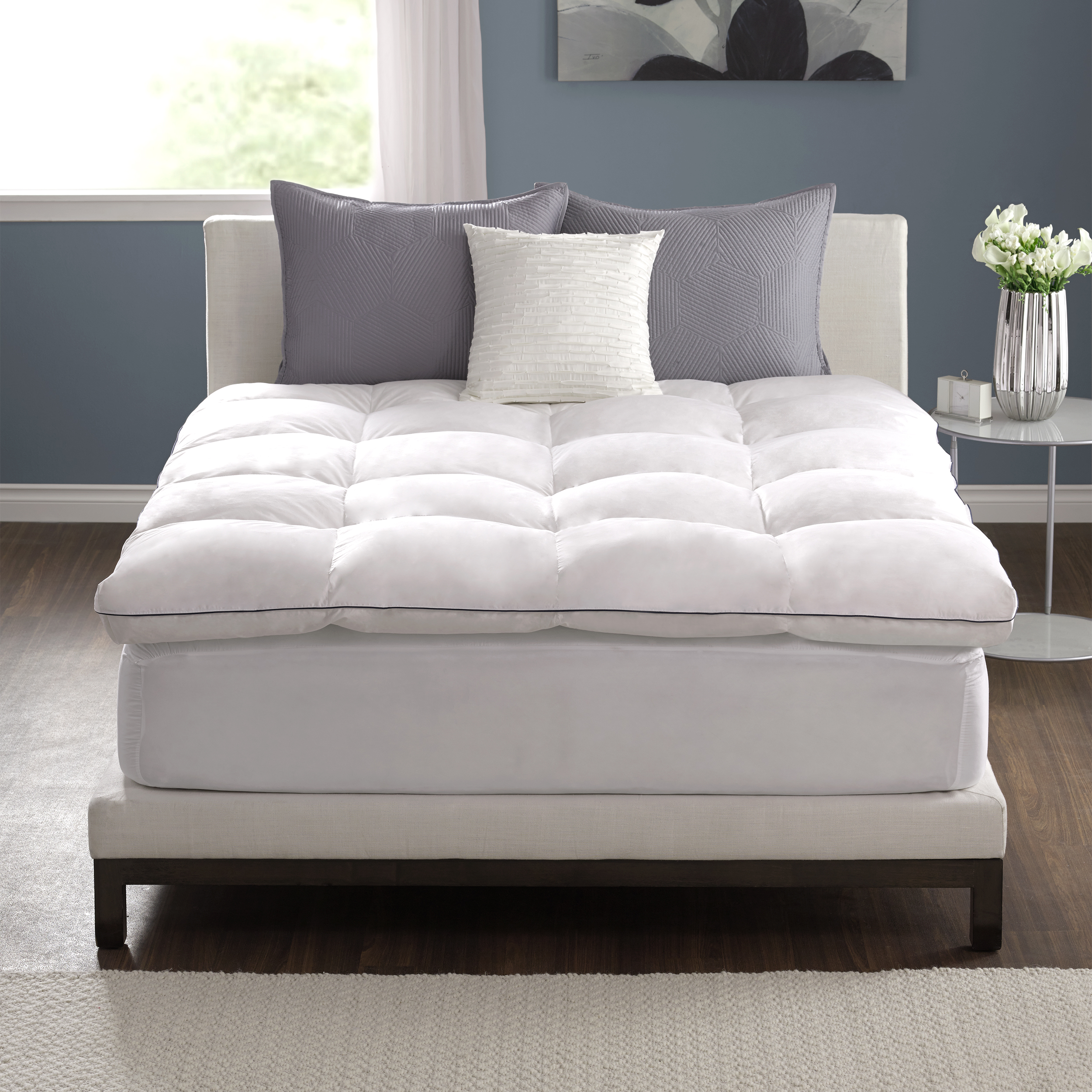What the best mattress topper or pad does
- Combines cushioning with support. Firmness is largely a matter of personal preference, but the topper should provide the level of softness you like without collapsing under your weight.
- Has a smooth surface. If you can feel rigid seams or feathers poking through the cover, you won’t get a comfortable night’s rest.
- Regulates body heat. Some users find that memory foam and latex toppers can trap body heat, while wool toppers get high marks for staying warm in winter and cool in summer.
- Is easy to handle. The ideal mattress topper unpacks easily, isn’t too heavy to lift, fits your mattress and doesn’t move around once it’s in place. Mattress pads should fit snugly and securely.
- Requires minimal maintenance. An easy-care topper will have a removable, washable cover and won’t need more than an occasional fluffing to keep it comfortable. Protective mattress pads are always machine washable, but may have special drying instructions.
- Holds its shape. Flimsy mattress toppers may sag, tear or develop lumps after a few months of use.
- Protects your mattress from stains. If you have small children, a waterproof mattress pad is a necessity. If you like to eat or drink in bed, mattress pads will help contain spills.
 Why do you need a mattress topper? If you want to add extra cushioning to a too-firm mattress, you’ll want a topper that’s fairly thick and soft. If your goal is to relieve pain, you’ll probably do best with a topper of high-density memory foam or latex, which provides extra joint support. If you and your sleeping partner prefer different levels of firmness in a mattress, you might want a softer or firmer topper that covers only half the bed, such as an extra-long twin for a king-size bed. If your bed is a full or queen size, however, you’d need to cut the mattress topper down to fit, which is easiest to do with a foam model.
Why do you need a mattress topper? If you want to add extra cushioning to a too-firm mattress, you’ll want a topper that’s fairly thick and soft. If your goal is to relieve pain, you’ll probably do best with a topper of high-density memory foam or latex, which provides extra joint support. If you and your sleeping partner prefer different levels of firmness in a mattress, you might want a softer or firmer topper that covers only half the bed, such as an extra-long twin for a king-size bed. If your bed is a full or queen size, however, you’d need to cut the mattress topper down to fit, which is easiest to do with a foam model.
What firmness do you prefer? Memory foam and latex toppers vary in firmness. With latex, the firmness level is usually spelled out; with memory foam, the thickness of the topper will determine its softness. Featherbeds and fiberbeds are good for adding softness, while wool toppers tend to feel less cushy.
Do you have any allergies? If you’re allergic to latex or feathers, avoid mattress toppers made with these materials. People with dust allergies may want to avoid both featherbeds and synthetic alternatives, since both materials can harbor dust mites. Latex mattress toppers, on the other hand, tend to repel dust mites. Wool mattress toppers can also be a good choice for allergy sufferers because they repel moisture, discouraging the growth of allergens like mold. While skin can become irritated by direct contact with wool, especially coarse wool, research shows that relatively few people actually have wool allergies.
Do you tend to overheat at night? Memory foam and latex mattress toppers trap body heat, although latex less so. The thicker and denser they are, the hotter they feel. Wool toppers provide extra warmth in winter yet reduce heat in summer by wicking away moisture. A memory foam or latex mattress that includes a cotton blend cover (or has one as an optional purchase) may sleep cooler than a foam mattress pad on its own.
Do you just want to avoid stains? In that case, you just need a mattress pad — either waterproof or non-waterproof.
Will you need new sheets? Adding a topper to your mattress will increase its thickness. If your fitted sheets are already snug on the bed or your topper is on the thick side, you may have to buy new fitted sheets with deeper pockets. This will add to the overall cost of your purchase. Some owners just put a mattress pad over the topper, and not the mattress itself, using the pad and topper as a mattress protector. If you need a new mattress pad, please contact [email protected] or call +86-15805597457. If you want to get a deep sleep, you can visit this blog.

